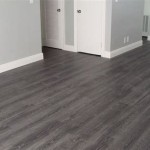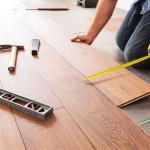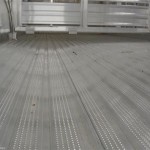Linoleum Flooring Cost Per Square Foot: A Comprehensive Guide
Linoleum flooring, a resilient and eco-friendly option, has experienced a resurgence in popularity due to its durability, design versatility, and sustainable characteristics. Understanding the cost per square foot is crucial for budgeting any flooring project. This article will provide a detailed breakdown of linoleum flooring costs, exploring the factors that influence pricing and offering insights into installation expenses.
Linoleum is a composite material made from natural ingredients like linseed oil, rosin, cork dust, wood flour, and pigments, pressed onto a jute backing. This composition contributes to its biodegradable nature and makes it a preferred choice for environmentally conscious consumers. The cost of linoleum can vary significantly depending on several factors. Understanding these factors is essential for making informed decisions when selecting flooring materials.
Factors Influencing Linoleum Flooring Cost
Several key factors contribute to the variation in linoleum flooring prices. These include the quality of the material, the complexity of the design, the installation method, and any additional treatments or features.
Material Quality: The quality of the linoleum itself significantly impacts the price. Higher-quality linoleum, characterized by denser composition and more durable construction, will generally command a higher price per square foot. This increased investment often translates to a longer lifespan and improved resistance to wear and tear. Lower-quality options may be more affordable upfront but could require more frequent replacements, negating any initial cost savings.
The manufacturing process also affects the quality and subsequently the price. Some linoleum is manufactured using more refined processes that result in superior consistency and uniformity. These products typically have a smoother surface and are less prone to imperfections, further increasing their value.
Design Complexity: Linoleum is available in a wide array of colors, patterns, and textures. Simple, solid-colored linoleum tiles or sheets are generally less expensive than those with intricate designs or custom patterns. The complexity of the design requires more sophisticated printing or inlaying techniques, which adds to the manufacturing cost and ultimately increases the price for the consumer.
Some manufacturers offer custom design options, allowing homeowners to create unique flooring patterns. This customization, while aesthetically appealing, can significantly raise the cost per square foot due to the added design and production time involved.
Installation Method: The method of installation can also influence the overall cost of linoleum flooring. Linoleum is typically available in two primary formats: sheets and tiles. Sheet linoleum, which is sold in large rolls, usually requires professional installation due to its size and the expertise needed to cut and seam it properly. Tile linoleum, on the other hand, can be a more DIY-friendly option, potentially reducing labor costs.
Sheet linoleum generally requires a perfectly smooth and level subfloor for proper installation. Any imperfections in the subfloor can telegraph through the linoleum, affecting its appearance and longevity. Preparing the subfloor can add to the overall installation cost, particularly if extensive leveling or repairs are required.
Additional Treatments and Features: Some linoleum flooring options come with additional treatments or features that enhance their performance and aesthetics. These can include UV coatings for improved fade resistance, antimicrobial treatments for enhanced hygiene, or specialized surface textures for slip resistance. Each of these features contributes to the overall cost per square foot.
For example, linoleum with enhanced slip resistance is often used in areas prone to moisture, such as bathrooms and kitchens. The added slip resistance requires special manufacturing techniques, which increase the product's price. Similarly, linoleum with UV protection is designed to withstand prolonged exposure to sunlight, making it suitable for sunrooms or areas with large windows. The UV protection treatment adds to the material cost.
Average Cost Per Square Foot for Linoleum Flooring
The cost of linoleum flooring typically ranges from $3 to $7 per square foot for the material alone. This price range can fluctuate based on the factors mentioned earlier, such as material quality, design complexity, and any additional treatments or features. It's important to note that this is just the cost of the material and does not include installation expenses.
For basic linoleum tiles or sheets with simple designs, the cost may fall on the lower end of the range, around $3 to $4 per square foot. These options are often suitable for budget-conscious homeowners or those looking to cover large areas. Higher-end linoleum, with intricate designs, premium materials, or specialized features, can cost upwards of $6 to $7 per square foot or even higher for custom designs.
When budgeting for a linoleum flooring project, it is crucial to factor in the cost of installation. Professional installation can add an additional $2 to $5 per square foot, depending on the complexity of the job and the installer's rates. This brings the total cost, including materials and installation, to a range of $5 to $12 per square foot.
The total cost of the project will also depend on the size of the area being covered. For example, flooring a small bathroom might cost a few hundred dollars, while flooring an entire kitchen or living room could cost several thousand dollars. Getting multiple quotes from different flooring contractors is recommended to ensure a competitive price and a clear understanding of the scope of work involved.
Installation Costs and Considerations
Installation costs can significantly impact the overall budget for a linoleum flooring project. Several factors influence these costs, including the condition of the subfloor, the complexity of the layout, and the installer's labor rates. Understanding these aspects can help homeowners anticipate and manage installation expenses effectively.
Subfloor Preparation: The condition of the subfloor is a critical factor in determining installation costs. Linoleum requires a smooth, level, and clean surface for proper adhesion and longevity. If the subfloor is uneven, damaged, or contaminated, it may need to be repaired or replaced before installing the linoleum. Subfloor preparation can include patching holes, leveling uneven areas, and removing any existing flooring or adhesives.
Depending on the extent of the subfloor damage, preparation costs can range from a few hundred to several thousand dollars. For minor imperfections, patching and leveling compounds may suffice. However, for significant damage, such as rot or water damage, replacing the subfloor entirely may be necessary. This can add significantly to the overall project cost.
Layout Complexity: The complexity of the room layout can also affect installation costs. Rooms with irregular shapes, corners, or multiple doorways require more precise cutting and fitting of the linoleum, which increases labor time and material waste. Intricate patterns or borders can also add to the installation complexity and cost.
Simple, rectangular rooms are generally easier and less expensive to install compared to rooms with complex layouts. For rooms with intricate designs or layouts, it is advisable to hire an experienced installer who is familiar with linoleum flooring. Their expertise can ensure a professional and long-lasting result.
Installer's Labor Rates: Labor rates for linoleum flooring installation vary depending on the installer's experience, location, and the demand for their services. It is recommended to obtain multiple quotes from different installers to compare prices and services. Be sure to inquire about their experience with linoleum and ask for references or examples of their previous work.
Some installers charge by the square foot, while others charge by the hour. A square foot rate is generally more predictable, but an hourly rate may be more suitable for complex installations. It is essential to have a clear contract that outlines the scope of work, the payment terms, and any guarantees or warranties provided by the installer.
In addition to the basic installation costs, there may be additional expenses to consider, such as the cost of removing and disposing of existing flooring, moving furniture, and installing baseboards or trim. Ensure that these costs are included in the overall project budget.
Choosing linoleum flooring involves considering not only the material cost but also the installation expenses. Properly assessing all these factors allows for a realistic budget and ensures a successful flooring project that aligns with your needs and preferences. By understanding the intricacies of pricing and installation, consumers can make informed decisions and achieve a durable, aesthetically pleasing, and environmentally friendly flooring solution.

Average Cost Of Vinyl Flooring Installation In 2024 Forbes Home

Cost To Install Vinyl Plank Flooring A Complete Guide For 2024 Forbes Home

Cost To Install Vinyl Floors The Home Depot

Cost To Install Vinyl Floors The Home Depot

Fixr Com Cost To Install Vinyl Flooring

How Much Does Linoleum Flooring Cost 2024

Linoleum Flooring Pros And Cons Forbes Home

How Much Does Flooring Installation Cost In 2024 Forbes Home

The Complete Guide To Flooring Costs By Type Twenty Oak

Fixr Com Cost To Install Vinyl Flooring
Related Posts








